Bonaire a diver's paradise
Two divers in heaven, more flamingos than people and how the weather brings our stay to an abrupt end.
Bonaire, the B of the ABC islands (Aruba, Bonaire and Curaçao), the westernmost archipelago of the Lesser Antilles. It belongs to the "special communities" of the Netherlands and thus to its kingdom. The national language is Papiamentu, a creole language made up of Spanish, Portuguese and Dutch. The island has been protected since the 1970s and officially declared a national park in the 1990s. It is therefore not permitted to anchor here, but only to moor to buoys to protect the seabed. The waters around Bonaire are among the top 10 dive sites in the world. We obviously are going to check it out 😉🤿🐟
Hello Bonaire!
After almost three weeks in the coral archipelago of Los Roques, we are back at sea. It's a short trip: about 80 nautical miles lie ahead of us. We have decided to sail overnight so that we arrive in the morning. Night shifts are something special. They can be magical, but also sometimes scary. We have two rules on board at night: 1. the person on watch outside has to click themselves in. We wear life jackets at night with a carabiner system attached to them, a so-called life belt. This means we are always connected to the ship and the risk of a man-overboard scenario is much, much smaller. Rule number two says: If you have to leave the cockpit to do something on the foredeck, you must wake at least one other person.
We have no complications that night and arrive in Bonaire early in the morning as planned. From a distance we see a boat we recognise: "That's Martin and his Amélie!" remarks Thierry, pointing to a man getting into his dinghy. And indeed, it really is Martin. We met him in the shipyard in Trinidad. He helps us tie up to the buoy next to him and we talk briefly. Kiki, who has lived here in Bonaire for more than 20 years, is currently sailing with him. The two of them invite us to join them on the island tour planned for today. We happily accept, but first have to go through the usual formalities with the authorities before we are allowed to move freely on land.
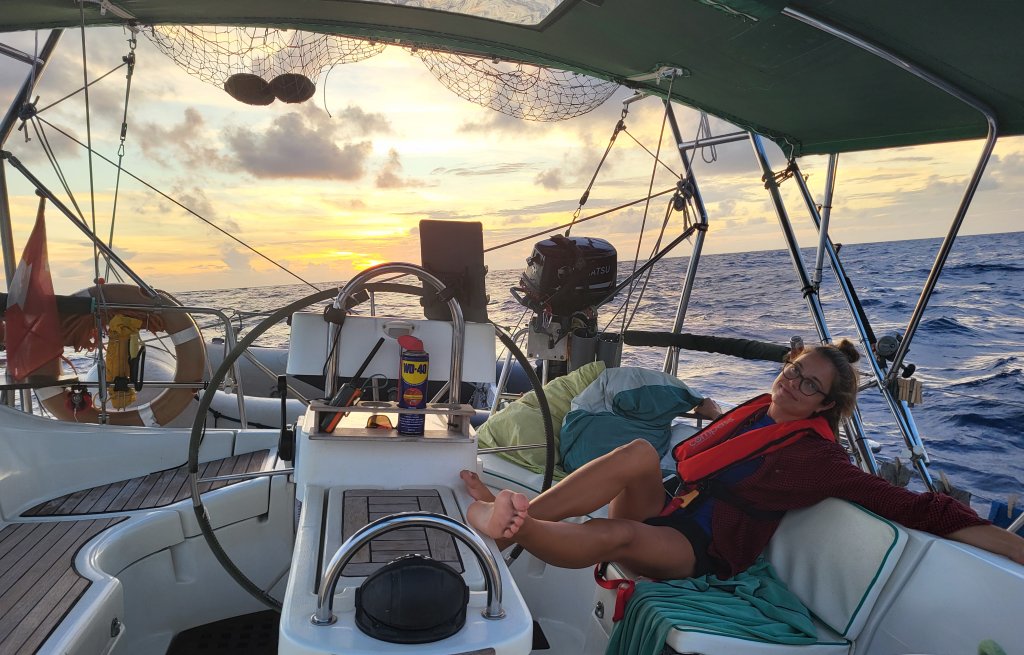
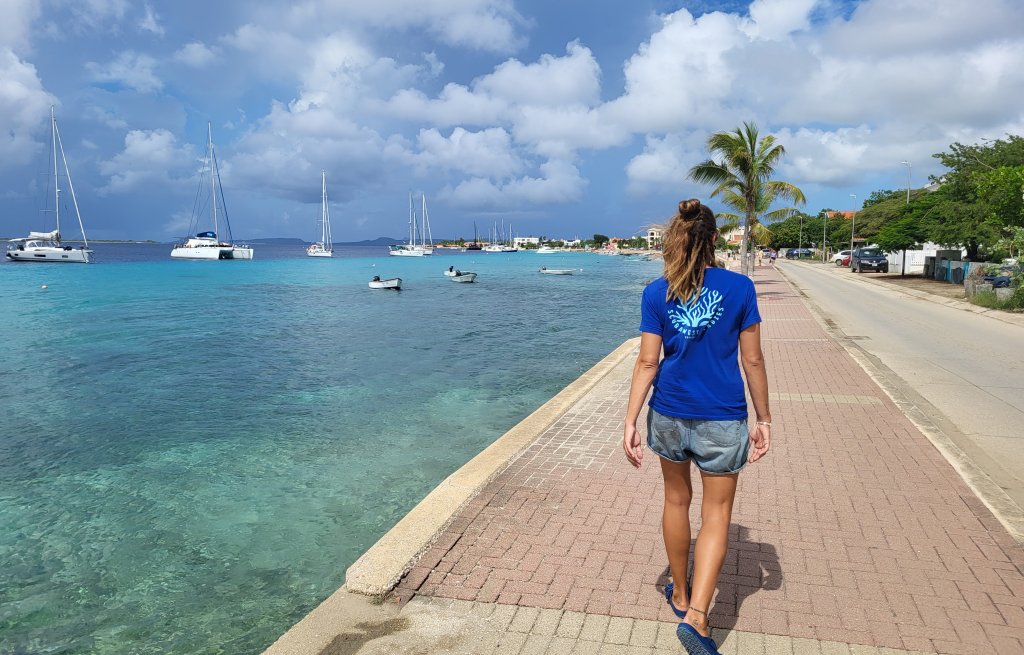
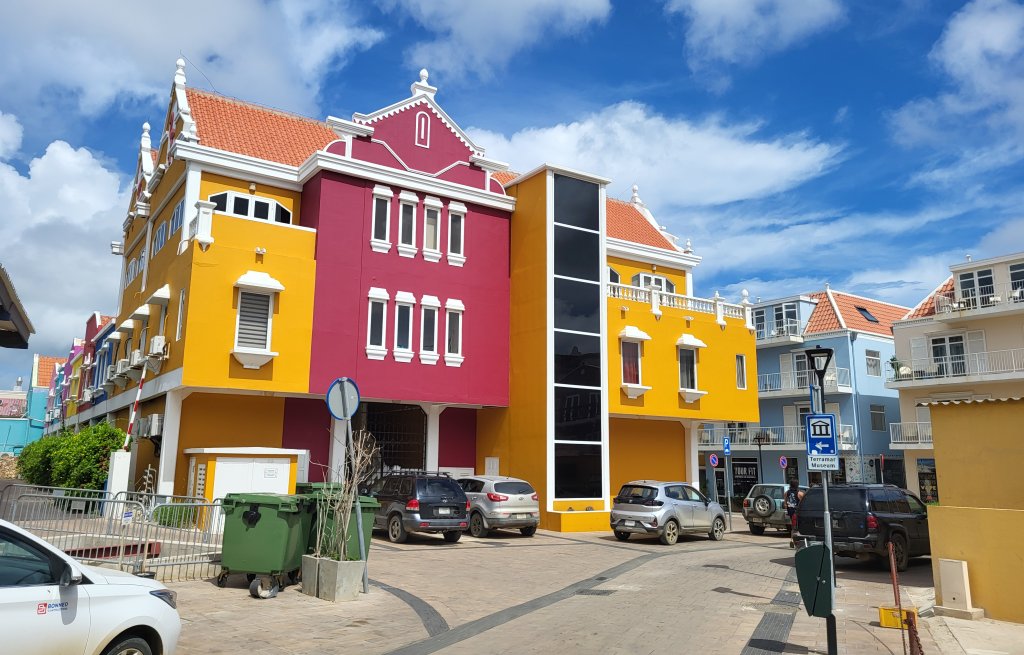
Under the sign of the flamingos
One thing we soon realise: Bonaire has a thing for flamingos! 🤣 Logos, statues, names, flamingos everywhere. The animal has a special status here, as Bonaire is one of the few places where flamingos can be found all year round. In the 1980s, there were a lot more flamingos than inhabitants. Unfortunately, this is no longer the case, although you can still observe flamingos at their breeding site in Lac Bay 🦩.
We get into the car at Kiki's and set off on our round trip. It's just after midday and I'm dead tired - the previous night at sea is still weighing heavily on my bones. But I'm really looking forward to the afternoon and my tiredness is soon forgotten. Kiki explains a lot about the island and its inhabitants. It soon becomes clear that the influence of the Netherlands doesn't go down well with everyone. Or rather, the behaviour of the Dutch people living on Bonaire seems to leave a lot to be desired. And to be honest, you can feel it when you walk through the streets of the towns. The friendly, open vibe that we have experienced in the Caribbean so far is missing. I would even say that the fronts have hardened a little. But what do I know, I only spent a few days on this island 😉
We enjoy the afternoon ashore, watching, listening and learning. After sunset, however, the inevitable exhaustion kicks in and we fall contentedly into our bunks after this long, beautiful day.
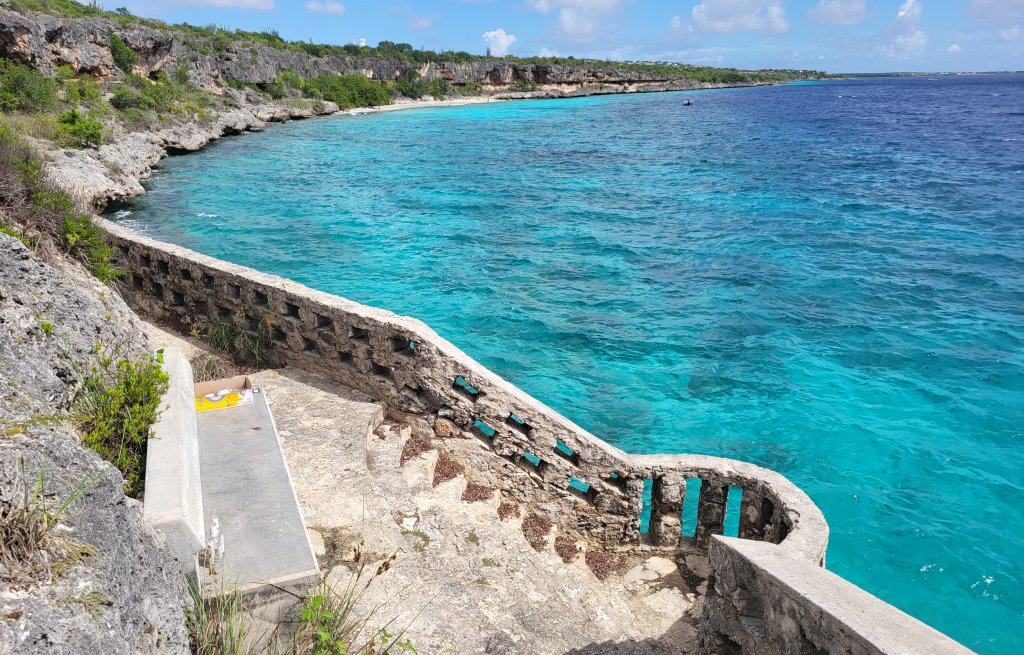
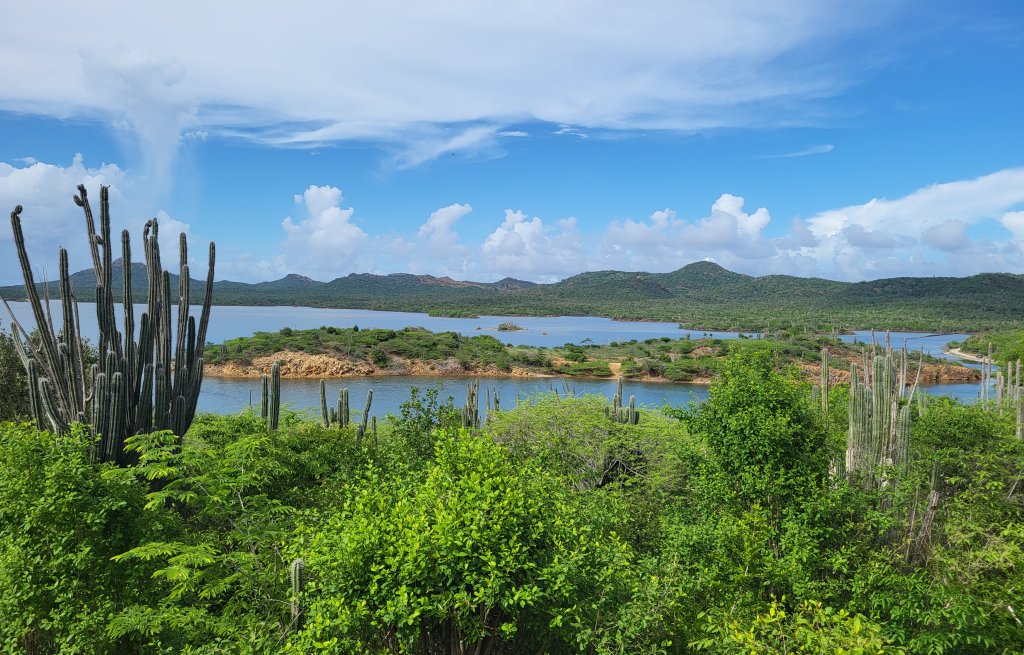
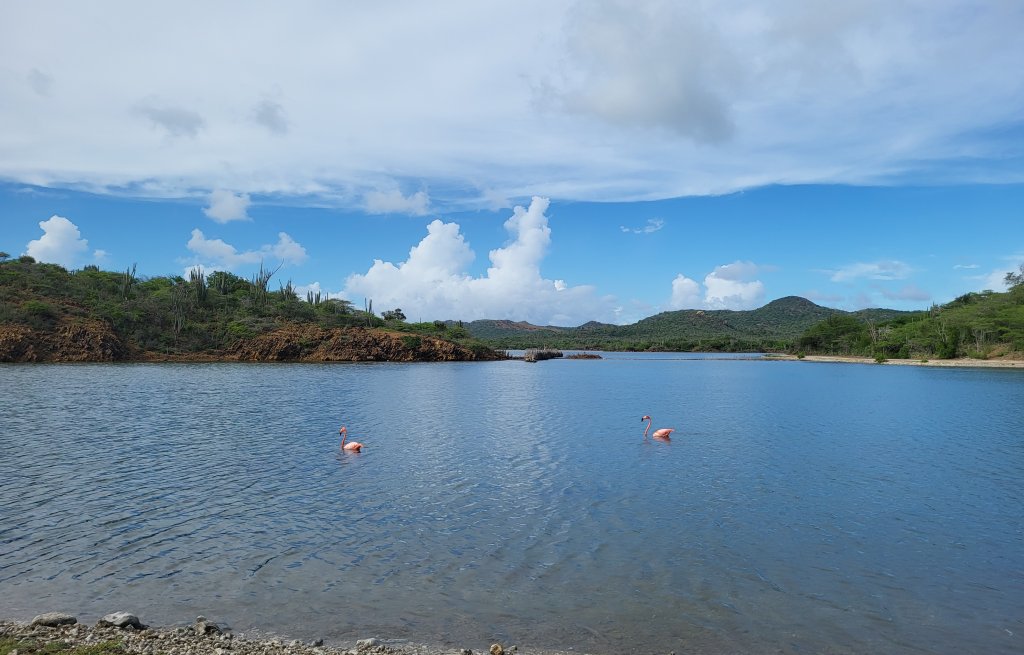
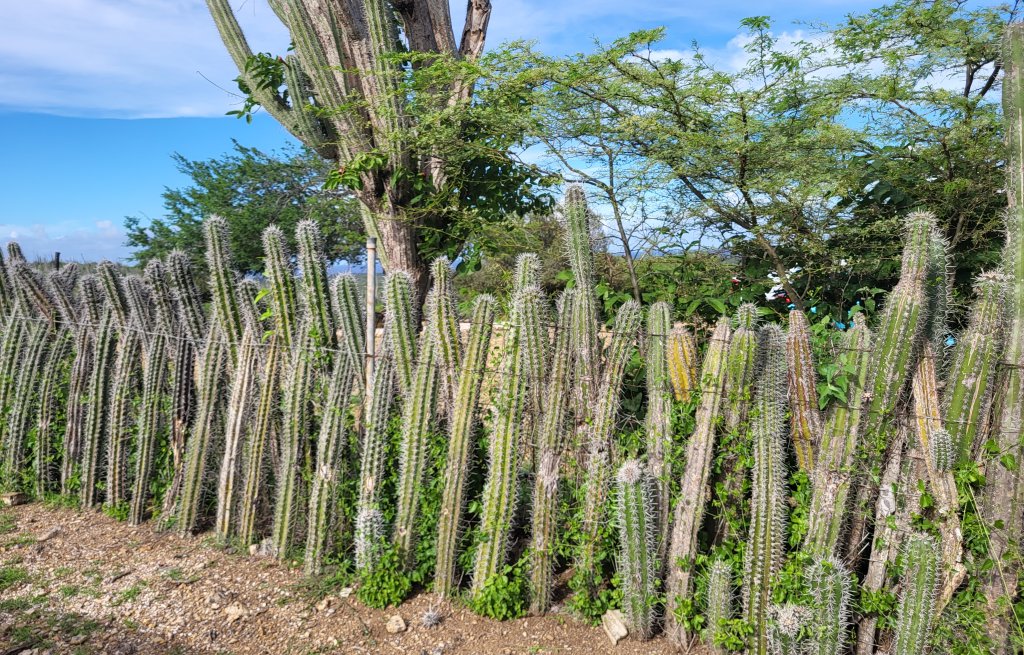
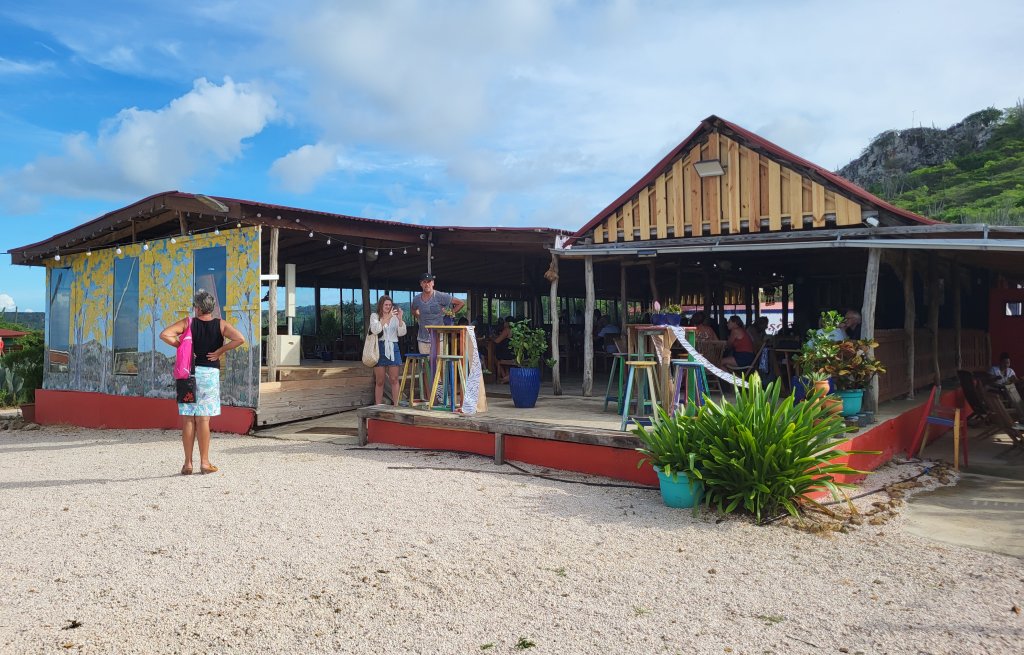
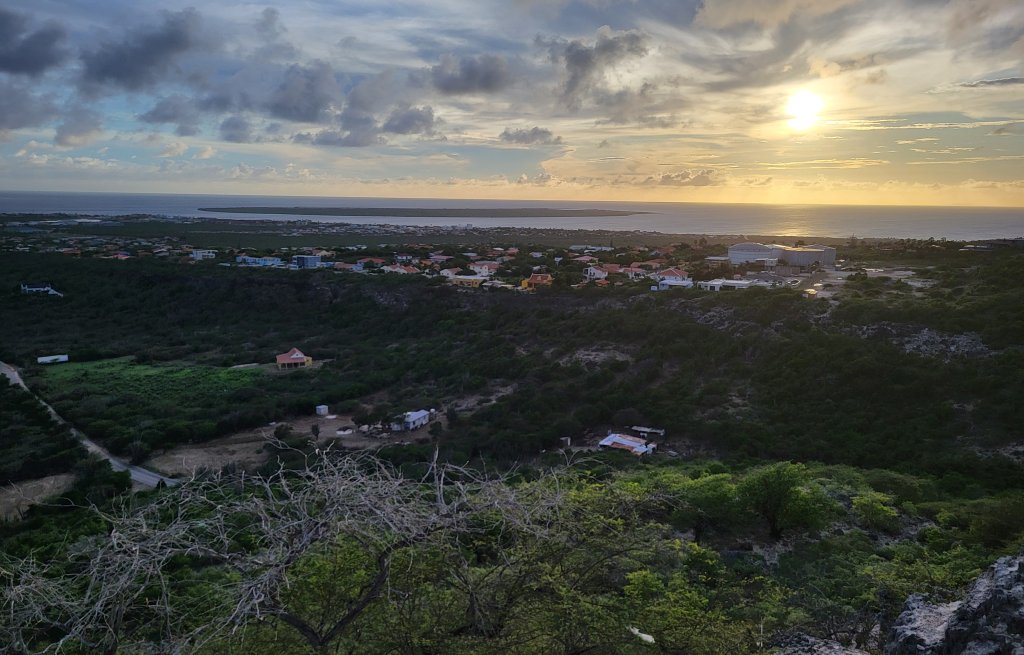
Bonaire from below
Of course, we didn't just come to this island to stalk flamingos. We want to dive! 🤩 There are around eighty dive spots along the coast and around little Bonaire. The cool thing is that all these dive sites are well marked and many of them can be reached by car. There are often buoys where you can moor if you are travelling by boat. There are books and maps describing the sites. This is super special because it gives the average diver the opportunity to go diving without having to accompany a diving school every time. Of course, trips with diving schools are great because the guides know the area inside out and can share a lot of information. But diving in this context is often not a cheap endeavour. In Grenada, we were able to buy second-hand jackets and regulators from my diving school and therefore only need tanks. We can hire these from a shop for 12 euros a day. We've never been diving so cheaply! 😍 And we can easily get to the nearby spots with the dinghy. So it's dive-work-sleep-repeat 😉
The underwater world is also really beautiful and rich in species. The water is super clear. At one point we simply plop into the water directly from the stern of the Cervino and dive on the reef behind us. On the way back, we still have a bit of air left and use a scraper to remove algae from the entire underwater hull in 15 minutes. A job that usually takes two people over an hour.😅
We see all kinds of corals, turtles, large and small fish. We don't see any sharks this time 😉 Instead, we get up close and personal with a barracuda 😵 A very impressive experience. I can see the large predatory fish crouching on the seabed from afar. 'What's he doing there', I think and look questioningly at my diving buddy Thierry. One thing's for sure: he's got us in his sights! We swim past calmly as he suddenly rises from the bottom and shoots towards us like an arrow. At the last moment, it turns round, shoots past us and returns to its starting point in a wide arc. Thierry and I look at each other. We both realise that even if we wanted to, we could never get away from a fish like this. As soon as we enter their territory, we don't stand a chance. Fortunately, humans are not on the menu for fish 😉
Among thousands of fish

We spend another day with Kiki and Martin. They take us to the south of the island so we can see a bit more of the mainland. The aim of the excursion is also a dive at one of Kiki's favourite dive spots, she worked as a diving instructor in the island for several years.
At the moment there is also a so-called "bait ball" around, a school of fish that forms a ball to protect itself from attackers. Nobody knows exactly where it is. On our last dive in the south of the island, we find it, or better said, it finds us! At a depth of around 5 metres, hundreds of fish suddenly shoot past us for several seconds. They are pursued by three large, fierce-looking tunas. What a spectacle!
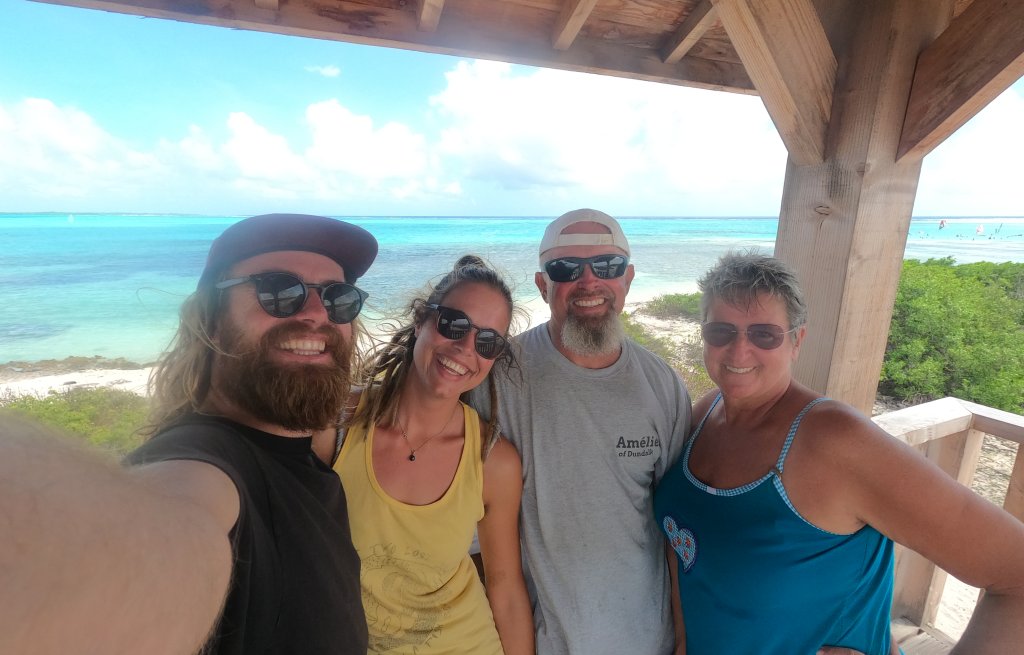
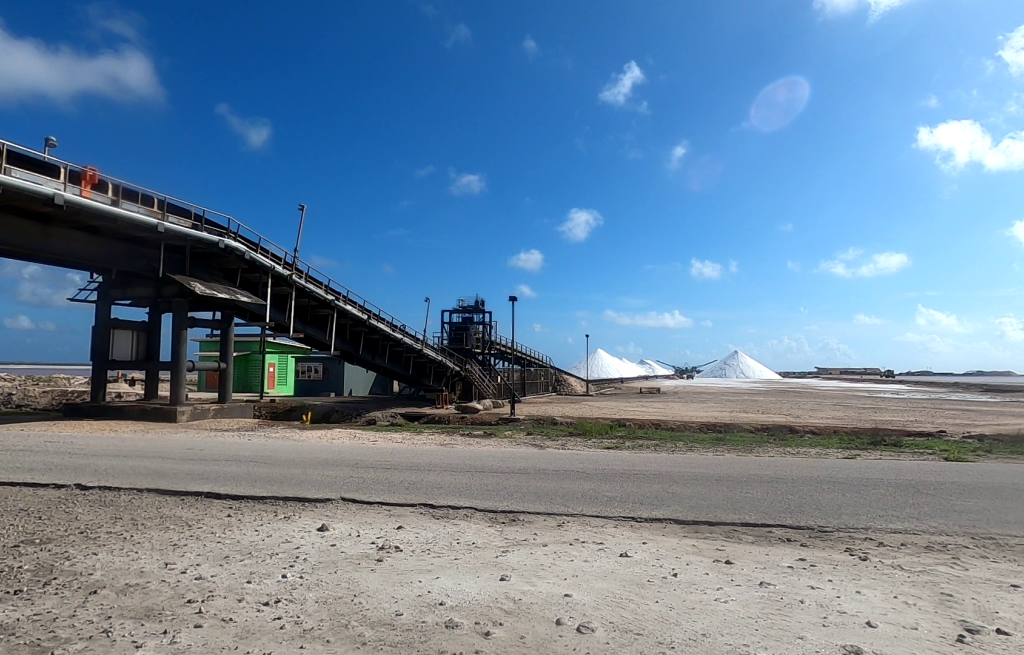
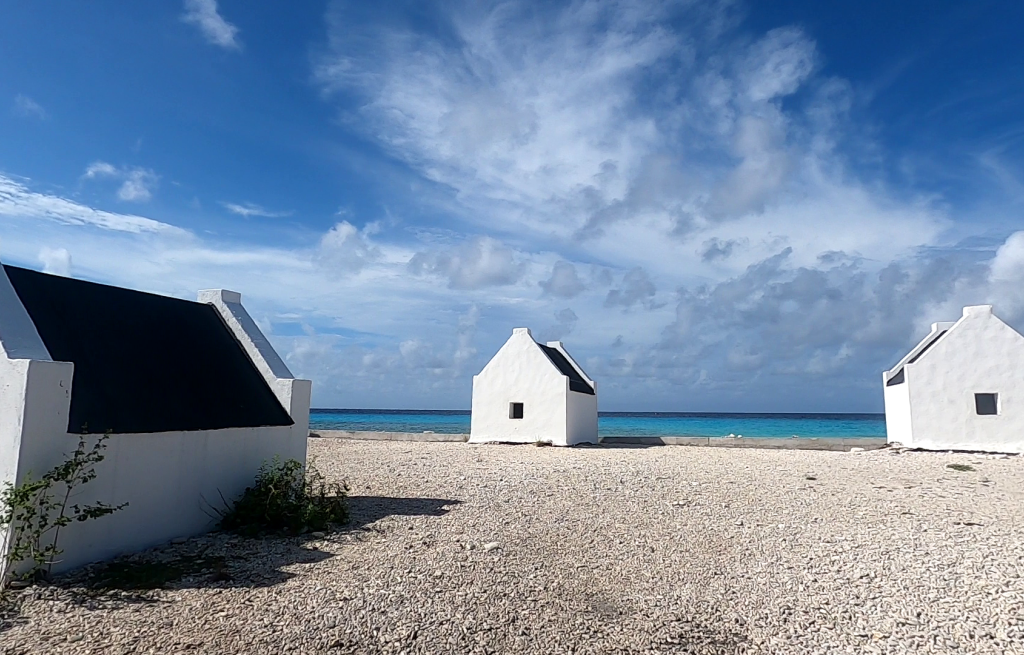
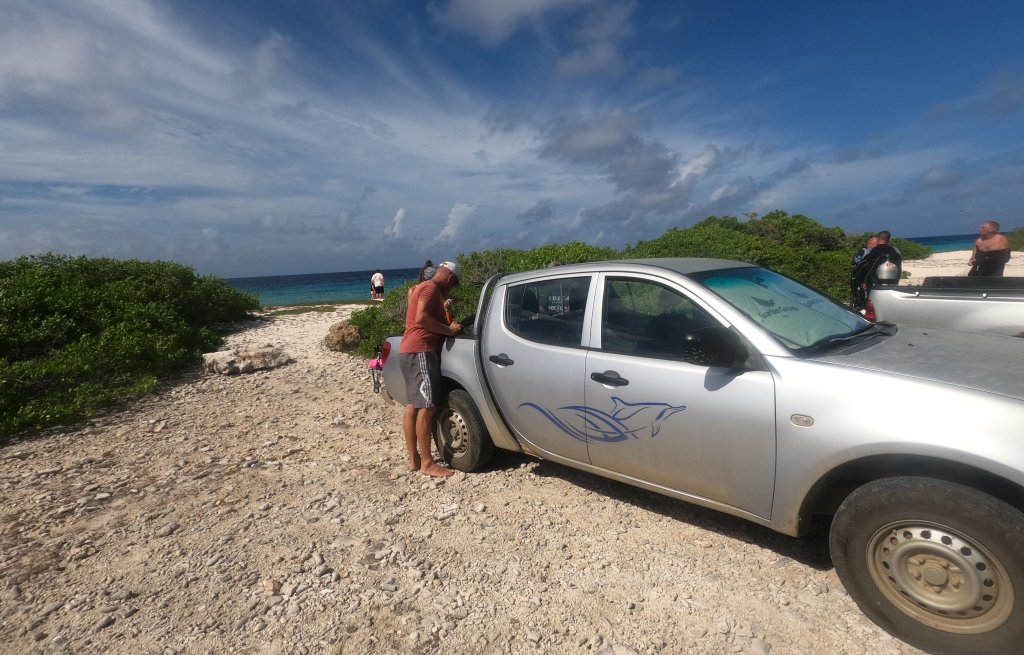
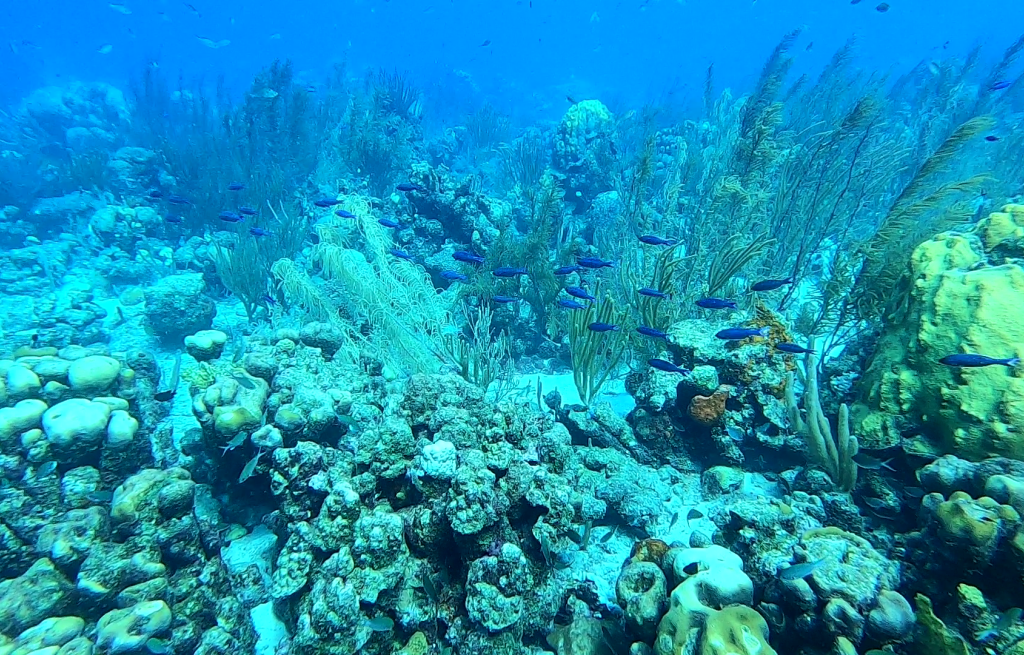
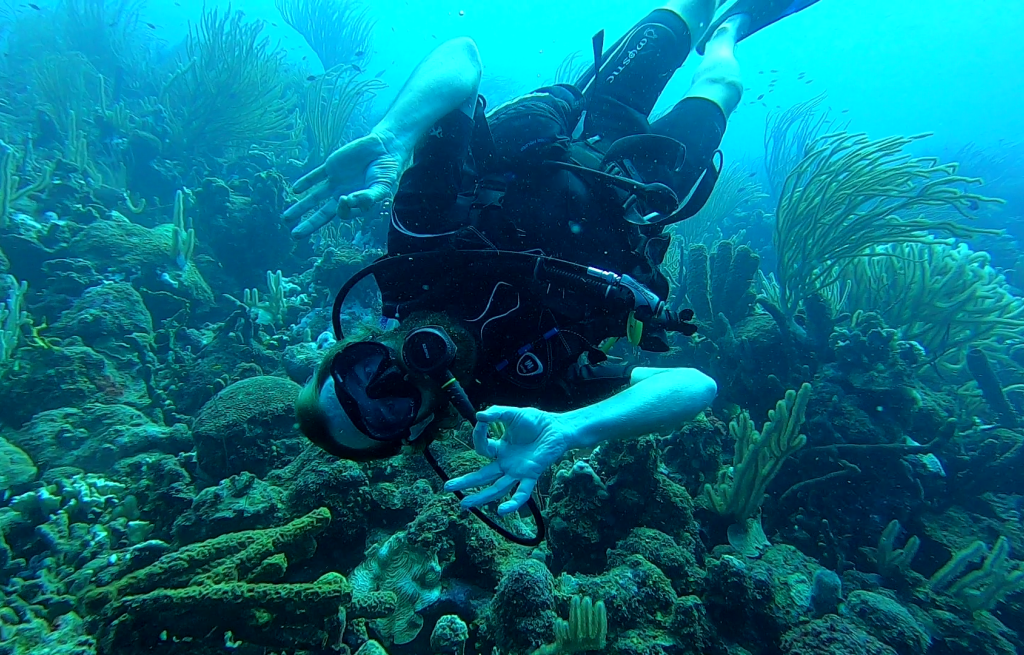
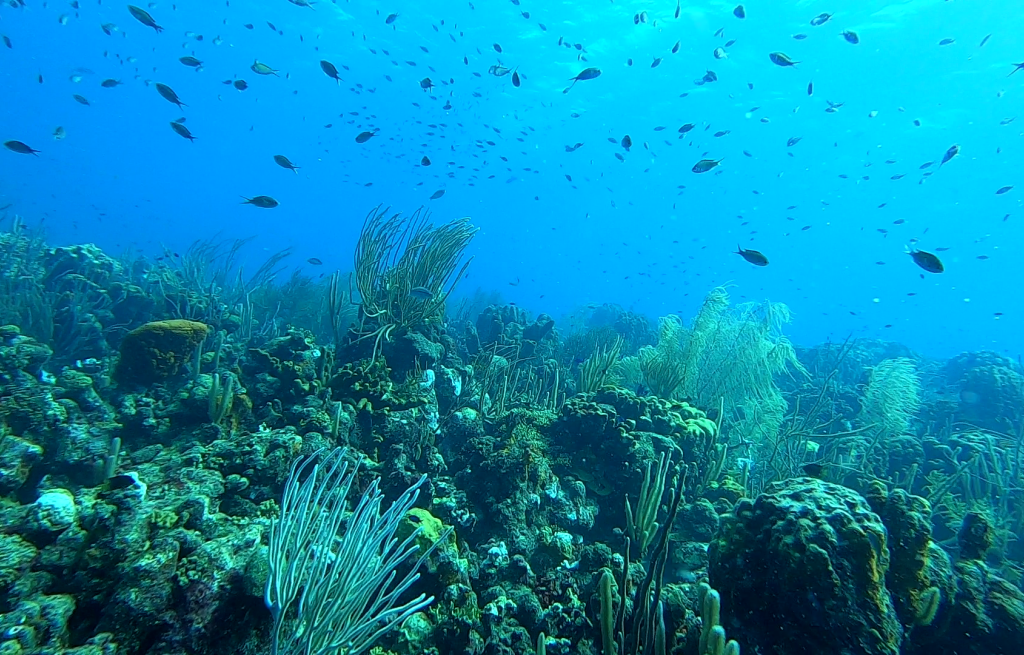
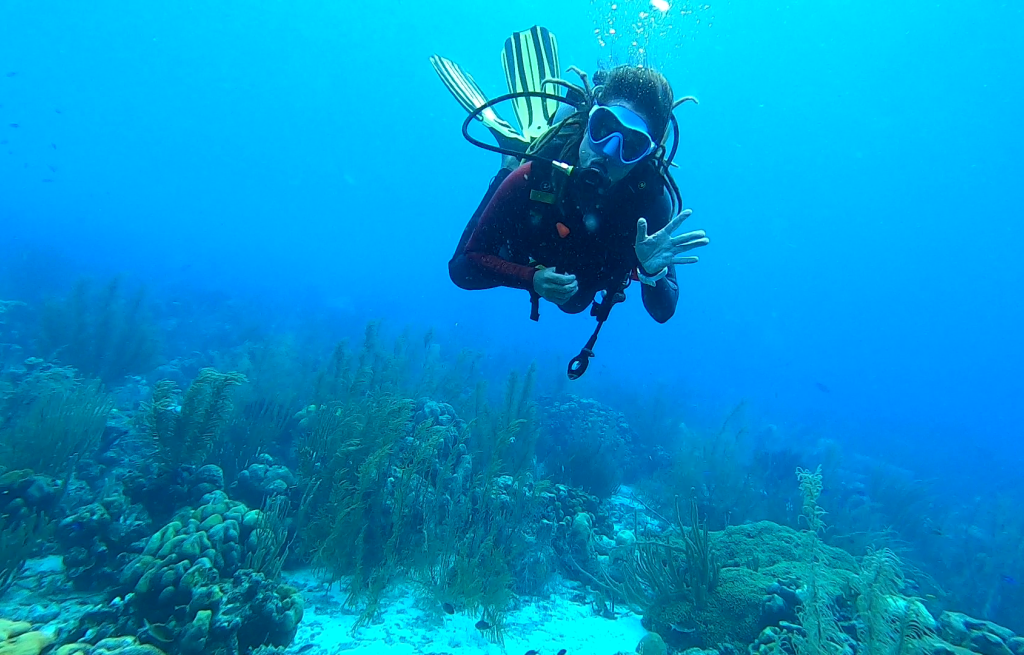
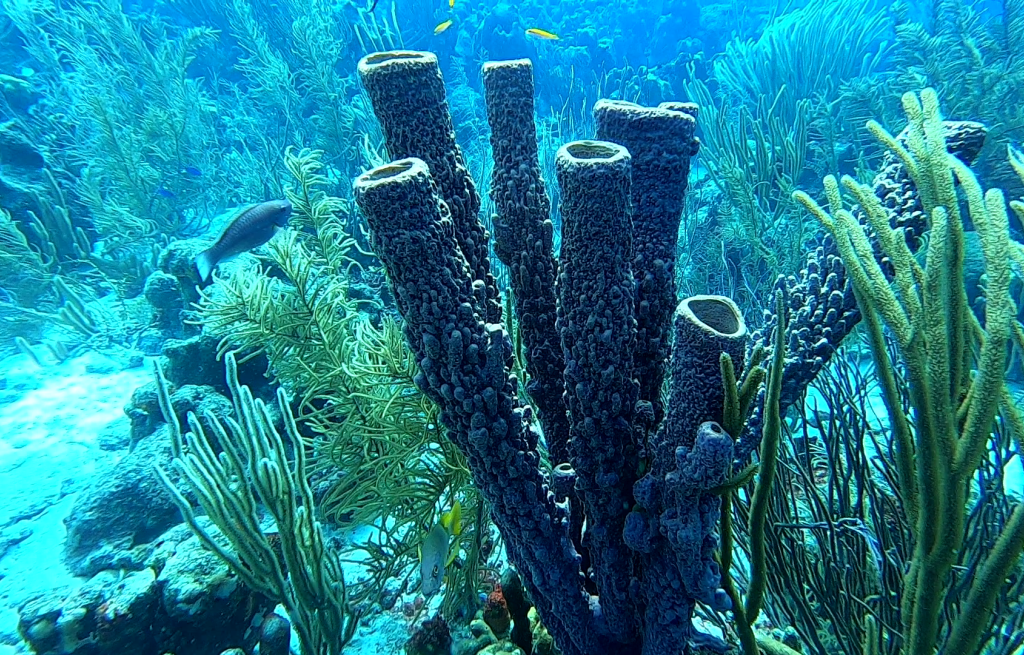
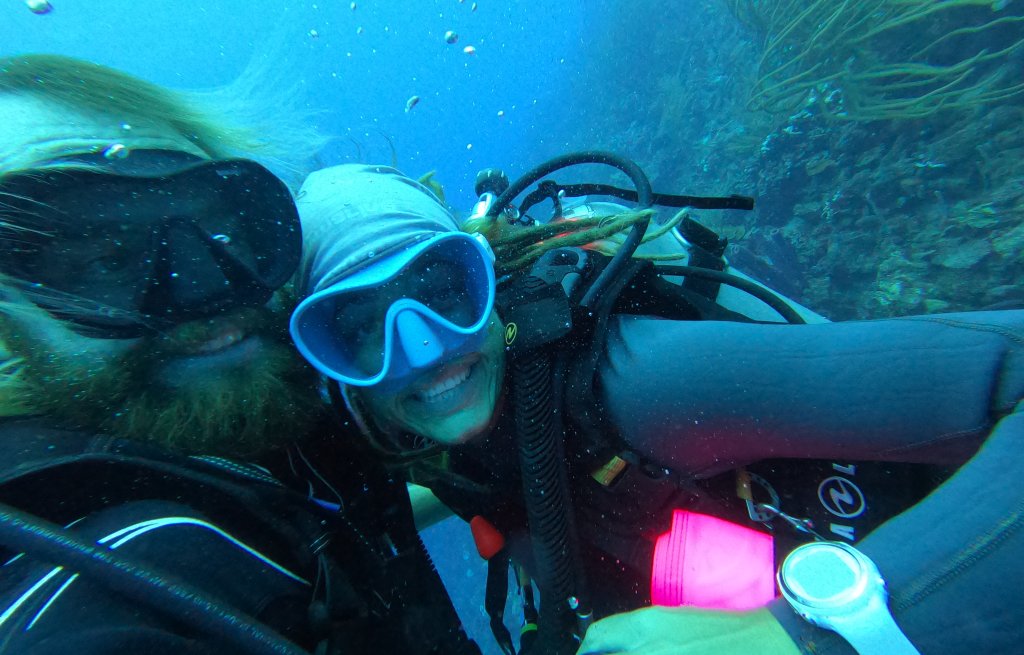
Gone with the wind
Life on a sailing boat is often associated with "freedom". Sailing wherever you want, whenever you want, that must be the dream! However, the reality is a little different. There is no doubt that the feeling of freedom at sea is enormous, as you have nothing on the horizon but the blue expanse of water and sky. However, you are not quite as free to plan your journey as you might be when living on land. The wind and the weather always dictate our rhythm, and this time should be no different.
Thierry and I are sitting at the table of the diving centre where we rent diving tanks. Starlink doesn't work on the ABC islands, so we had to find another solution for working. The diving centre has good wifi and the friendly owners have allowed us to spread out in the common room in the evening. "Maybe we should check the wind forecast again," I say to Thierry, "If I remember correctly, the wind will pick up quite a bit over the next few days". No sooner said than done, and he was right. The wind picks up to around 30 knots in a few days and then stays that way for the time being. Normally this doesn't bother us much, as long as the wind comes from behind, we can cope with it. But the passage ahead of us is no ordinary 0815 passage. This is goin to be a challenge.
The cape of horror

To sail from the ABC islands to Colombia, you have to pass Capo de la Vela. This is the northernmost point of the South American continent. Due to the Sierra Nevada in the north of Colombia, whose peaks are over 4000 metres high and reach almost down to the coast of the ocean, this coastal area is a weather kitchen of the finest kind. With an unfavourable combination of currents, strong trade winds and strong gusts of wind from the mountains, this section can be really dangerous for sailors. It is therefore not without good reason that Capo de la Vela is one of the 100 most difficult sailing passages in the world. Yay, sounds fun. One thing is certain: we would have been better off setting off yesterday than tomorrow. Once again, everything is happening far too quickly. We've only been here five days, haven't we? Isn't there still so much to see? If the wind had a voice, it would say: "Not my problem. You leave now, or in a fortnight' time". Of course, we could easily spend another two weeks in the ABC islands, but then our time in Colombia would be too short. And Thierry has been looking forward to this since the beginning of the year. However, he is visibly depressed about how sad I am about having to leave this diving mecca so early. Now it's time to put the sentimentality aside and think rationally: we can still dive a lot on our trip, but we won't be finding any 4000 metre high mountains any time soon.
The weather window is already not ideal, the wind is stronger than we would have liked for this passage. And the longer we wait, the more uncomfortable it gets. After a sleeping over it, we decide to set off and hope that we won't run into any nasty surprises.
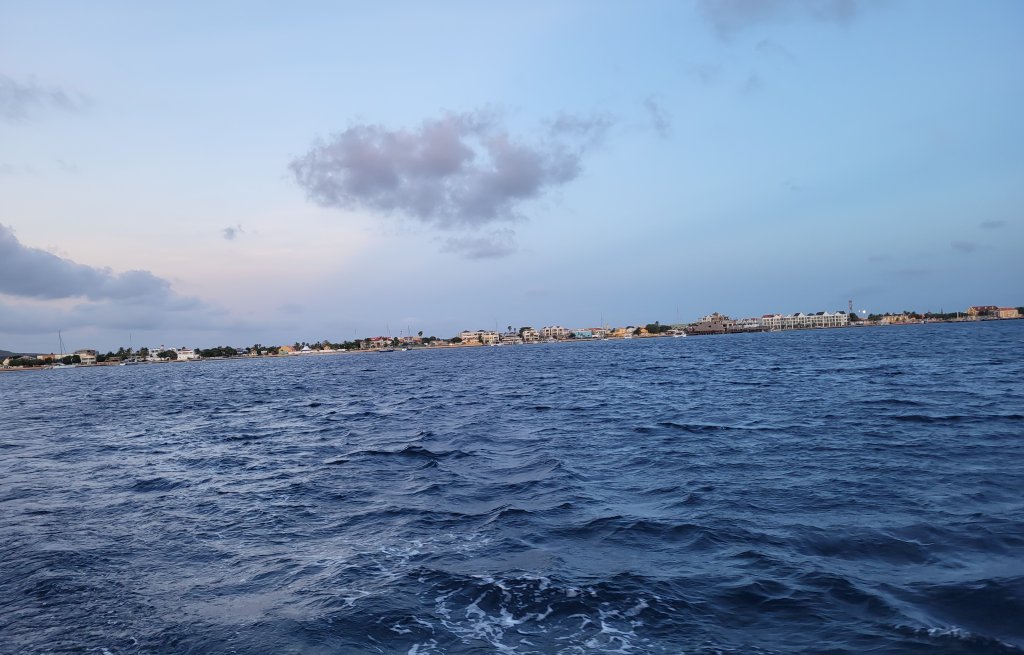
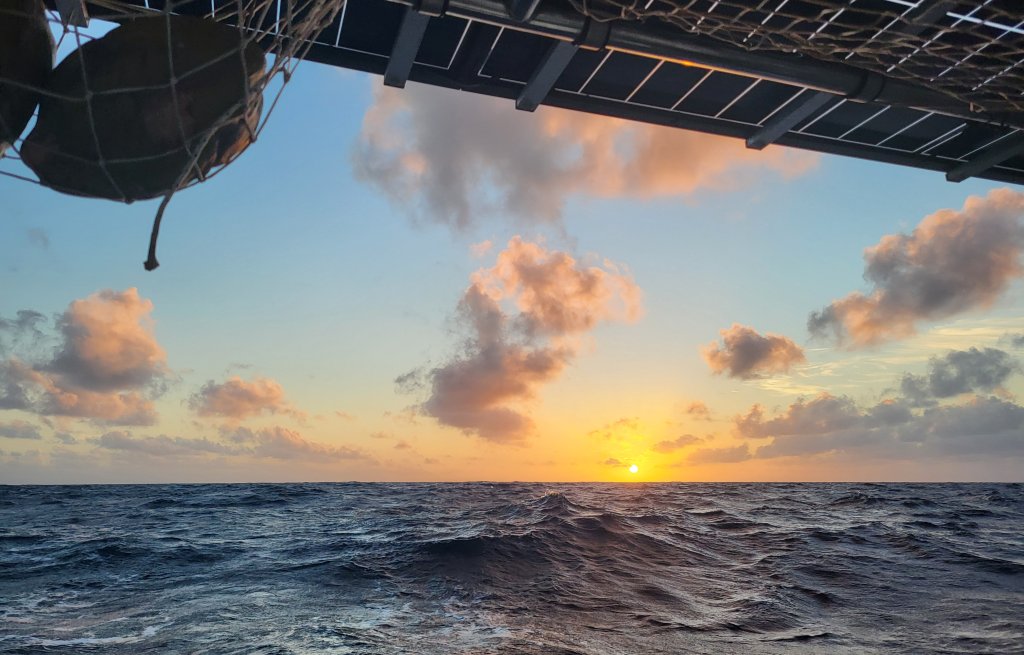
In the early evening, we leave the island of Bonaire behind us and sail towards the sunset. I have tears in my eyes. I would have loved to stay here for a few more days, but I also want to see Thierry fulfilling his wish and have enough time to explore Colombia. And I'm a little scared. The passage ahead of us intimidates us both. But only a little, because the past shows that we can do a lot. It only gets difficult when the forecast doesn't correspond to reality. The forecast is for gusts of up to 30 knots and waves of around 3 metres every 6 seconds. That doesn't leave much room for manoeuvre if we encounter stronger conditions. But I'm also feeling couragious and looking forward to the mountains and a bit of land life. We haven't been in a marina for six months and I'm looking forward to a long, warm shower.
Four days and four nights lie between us and this little spark of luxury. We soon realise that the wind is stronger than forecast. That's actually cool, because we're making great progress. However, Capo de la Vela is getting closer and we are both nervous. We already have constant winds of over 25 knots. We pass Curaçao and Aruba and are now in the open Caribbean Sea. The waves are getting higher.
What really awaits us at Capo de la Vela and how many waves will crash into the cockpit of the Cervino?
You'll soon find out...